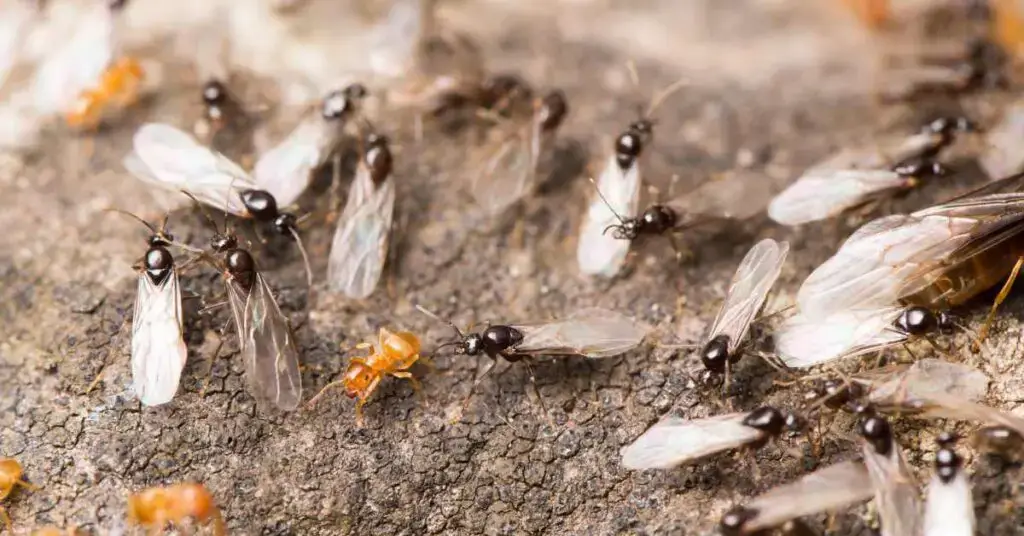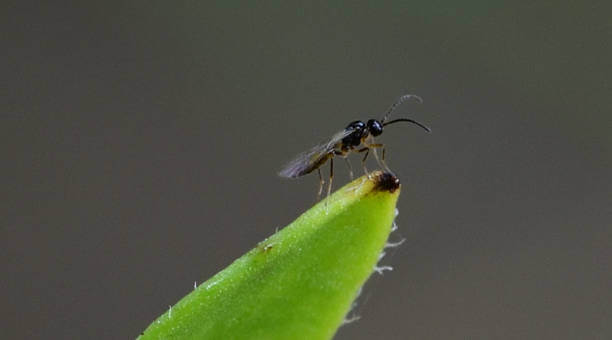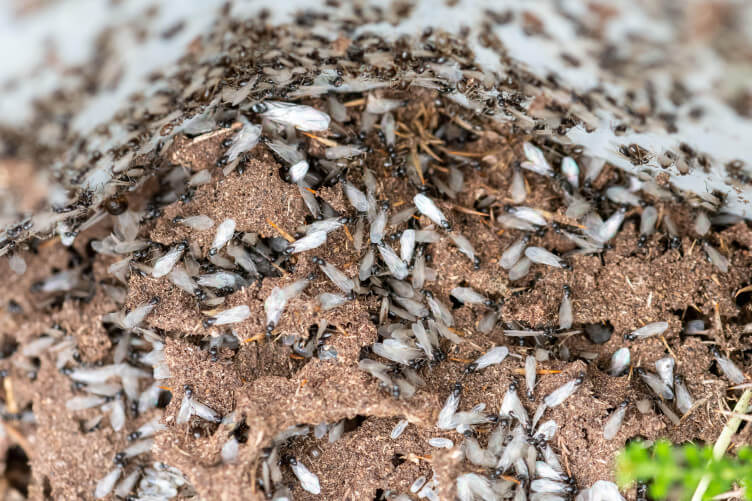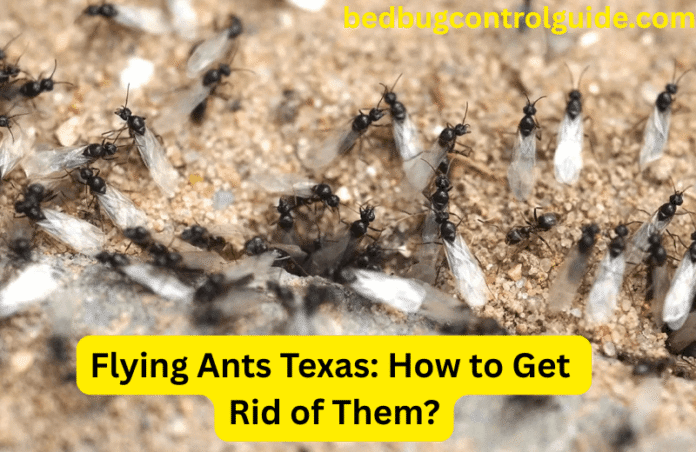Flying ants can be a startling sight, especially in swarms, which are common in Texas during summer. If you’ve noticed flying ants Texas residents are bracing for, you’re not alone. These winged insects, also called Texas flying ants and ants with wings in Texas, are not uncommon. They are often mistaken for termites or other pests but understanding them can help address their presence effectively. This year, Texas is likely to experience flying ant swarms, particularly in late July, due to the mating season. This blog will guide you through what they are, why they swarm, and how to manage them.
What Are Flying Ants?

Flying ants are not a unique species. They are the winged, reproductive males and females found in many ant colonies, including fire ants, carpenter ants, and harvester ants. These ants only develop wings for a short time during their lifecycle when it’s time to mate. After mating, the males die, and the females, now queens, shed their wings to start new colonies.
For example, sugar ant with wings is a common term describing flying ants often attracted to sweets and food residues indoors. While many are harmless, some species, like carpenter ants, can damage your home’s wooden structures if left unchecked.
Why Are They Swarming?
Swarming is part of the ants’ nuptial flight, which marks their reproductive phase. This behavior is triggered by warm temperatures, humidity, and rainfall. The synchronized mass flight serves an essential purpose—mating. It ensures genetic diversity by allowing ants from different colonies to mix.
Swarming tends to occur on hot, humid days, often after rains. It can seem sudden, but these ideal weather conditions are why you’ll notice these insects buzzing around in large numbers. Read our latest post on Fruit Flies vs Gnats: How to Tell the Difference in 2025
Flying Ants in Texas 2025

Late July Swarms and “Flying Ant Day”
Experts predict that Texas flying ants swarms will peak in late July 2025, coinciding with their mating season. Dubbed “flying ant day,” this event occurs when vast numbers of winged ants emerge simultaneously, seemingly out of nowhere. Such days can overwhelm outdoor spaces, making them uncomfortable, especially if aggressive species like fire ants are involved.
While these swarms are generally harmless, they could signal active ant colonies nearby. Aggressive ants, like fire ants, may bite if provoked. Some species, like carpenter ants, might lead to structural damage if they infiltrate homes. Being vigilant can save you from future infestations. Read our latest post on Where Do Gnats Come From in the House? Prevention and Treatment Tips
How to Identify and Deal With Flying Ants

Identification
Flying ants are often confused with termites. Here’s how to tell them apart:
- Wing Size: Ant wings are of different sizes; termites’ wings are the same size.
- Antennae Shape: Ants have bent antennae, while termites’ antennae are straight.
- Waist Shape: Flying ants have pinched waists, unlike the broad-waisted termites.
If unsure, it’s best to consult a pest control professional, as both these pests may require attention.
Prevention
Stopping a swarm before it starts is ideal. Use these prevention methods:
- Seal cracks and gaps in walls, windows, and doors.
- Keep food stored in airtight containers.
- Regularly clean kitchen surfaces and floors to remove food residue.
- Eliminate standing water around your home to reduce moisture that attracts ants.
Control
If flying ant Texas infestations occur despite preventative measures:
- Use natural deterrents such as sprays containing peppermint oil.
- Place baits near suspected nesting areas for sugar-loving ants.
- Call pest control services, especially if dealing with fire ants or persistent swarms.
Conclusion
Flying ants Texas residents will encounter this year are primarily harmless, but they can still cause disruptions and indicate nearby colonies. Prevention helps avoid swarms, while dealing with infestations swiftly keeps your home safe. Remember, species like fire ants and carpenter ants may pose risks, so stay alert. If needed, consult pest control experts to manage the problem efficiently. Follow Us on Facebook, Pinterest and Twitter for the latest updates.
Read Our Latest Guides on Termites:
- Tiny Baby Termites? Everything You Need to Know in 2025
- What Do Baby Termites Look Like? Termite Identification and Treatment in 2025
- Baby Termites vs Ants? How to Tell the Difference
Flying Ants Texas General FAQs
What causes flying ants in your house?
Flying ants come indoors if there’s easy access to food, water, or existing colonies nearby. Cracks in walls, doors, or unscreened windows also make entry easier.
Why do I suddenly see flying ants?
Flying ants appear in swarms when conditions are right for their nuptial flight, such as after rain when it’s warm and humid.
Does flying ants mean you have termites?
No, flying ants and termites are different. However, the visible presence of either may mean an infestation problem.
What brings flying ants outside in Texas?
Flying ants emerge outside to start new colonies, especially in warm, humid weather and after rain.
What are the black flying ants in Texas?
The black flying ants seen in Texas could be pavement ants or sugar ant with wings species. They are generally harmless but can be a nuisance.
Are black flying ants bad?
Black flying ants are not dangerous, though their swarms can be inconvenient. If they enter your home, they might multiply quickly.
What attracts flying ants?
Flying ants are attracted to moist areas, sugary foods, and light sources like lamps and windows.
What is the best way to get rid of flying ants?
The quickest solution is to vacuum visible ants and wipe surfaces with vinegar or soapy water. For longer-term results, use bait traps or hire professional pest control.
Will flying ants eventually go away?
Yes, flying ants settle after mating or if weather conditions change. However, swarms might persist if there are colonies nearby.
What is the best repellent for flying ants?
Natural sprays with peppermint oil or commercial ant control products work well. Ensure proper sealants are applied in cracks to keep them out.
When should I be worried about flying ants?
If you witness frequent swarms inside your home or suspect structural damage, it’s time to act.
How to find a flying ant nest?
Look for ant mounds in your yard or ant trails. Indoors, nests may exist in wood debris, walls, or beneath flooring.
How much does it cost to get rid of flying ants?
Professional extermination can cost between $150 and $500, depending on the severity and location of the infestation.



